Matrix Acidizing in Carbonate Formations
Abstract
:1. Introduction
2. High-Temperature Conditions
- (1)
- High acid volume required: Due to the fast chemical reaction rate of HCl with formations, acid is consumed quickly, resulting in the use of higher volumes of acid in acidizing treatments. This issue is worsened in high-temperature formations, as an increase in temperature increases the rate of reaction (as the Arrhenius reaction rate theory states: “a rise in temperature of 10 °C will roughly double the rate of a chemical reaction”) [11] through increasing the average kinetic energy of the reactant.
- (2)
- Inefficient wormhole structure: As HCl reacts quickly with the formation, it does not have enough time to penetrate deep into the media and leads to more uniform dissolution. It also does not provide an effective production of wormholes. Furthermore, it has been found that lowering the injection rate at high temperatures to increase contact time results in face dissolution, which is not an efficient structure for acidizing treatments.
2.1. Organic Acids
2.1.1. Acetic Acid
2.1.2. Methanesulfonic Acid
2.2. Surfactant-Based Emulsified Acids
2.2.1. Cationic Surfactant-Based Polymer-Assisted Emulsified Acid
2.2.2. Non-Ionic Surfactant-Based Emulsified Acids
2.3. Especialized Gelled Acid
Biopolymeric Resin-Based Retarded HCl
| Acid System | Acid Type | HCl % | T (K) | I.R. (m3/s) | PVBT | Core Inlet | Core Outlet | Wormhole | Reference |
|---|---|---|---|---|---|---|---|---|---|
| 15% HCl | HCl | 15 | 298.15 | 8.3 × 10−9 | 3 | 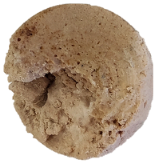 |  |  | [20] |
| 4% HCl | 4 | 394.26 | 3.3 × 10−8 | 4.25 | N/A | N/A |  | [12] | |
| 15% HAc | Organic | 0 | 383.15 | 2.2 × 10−8 | 9.1 | 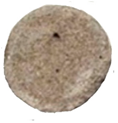 | N/A |  | [15] |
| 5% MSA | 5 | 422.04 | 1.3 × 10−7 | 1.33 | N/A | N/A |  | [12] | |
| PA EA | Surfactant-based emulsified | 36.8 | 383.15 | 3.3 × 10−8 | 0.34 | 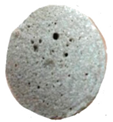 |  |  | [19] |
| NP 100 EO | N/A | 298.15 | 8.3 × 10−9 | 0.5 | 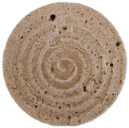 |  |  | [20] | |
| NIS EA | 15 | 422.04 | 3.3 × 10−8 | 0.19 |  |  |  | [4] | |
| BP Retarded HCl | Specialized gelled | N/A | 394.26 | 4.2 × 10−8 | 0.41 | N/A | N/A |  | [13] |
3. Heterogenous Formations
- (1)
- Pure HCl cannot achieve diversion: This issue is worsened in highly heterogeneous formations and thick reservoirs since large permeability contrast can significantly reduce the overall efficiency of stimulation treatments [24]. This can be seen in Table 2, where in a dual core flooding experiment, even at a low-permeability contrast, HCl reached breakthrough only through the high-permeability core [25].
- (2)
- Polymers used with acid tend to cause damage: This inhibits wormhole growth and can even cause the overall permeability of the core to decrease [24].
3.1. Polymer-Assisted Emulsified Acid
3.2. Viscoelastic Surfactant-Based Acid
3.2.1. TN-16235
3.2.2. VES and Foam-Based VES
| Acid System | Acid Type | HCl % | T (K) | KR | I.R. (m3/s) | PVBT | Ko (m2) | Kf (m2) | Low-Permeability Core | High-Permeability Core | Reference |
|---|---|---|---|---|---|---|---|---|---|---|---|
| Core Inlet | Core Outlet | Core Inlet | Core Outlet | ||||||||||
| 15% HCl | Mineral | 15 | 293.15 | 1.1 | 8.3 × 10−9 | N/A | 5.7 × 10−14 | 8.2 × 10−14 |  |  | [25] |
| PA-EA | Surfactant-based emulsified | 36.8 | 383.15 | 19 | 1.7 × 10−8 | N/A | 3.0 × 10−15 | infinite |  |  | [19] |
| TN-16235 | Viscoelastic surfactant-based emulsified | 15 | 393.15 | 13.1 | 8.3 × 10−9 | 0.65 | 3.0 × 10−15 | 1.9 × 10−13 |  |  | [31] |
| Pure VES | 15 | 333.15 | 9.8 | 2.5 × 10−8 | 3.42 | 2.0 × 10−14 | 2.8 × 10−14 | N/A | N/A | [27] | |
| Pure VES | 15 | 333.15 | 12.3 | 2.5 × 10−8 | N/A | 1.5 × 10−14 | 1.6 × 10−14 |  |  | [27] | |
| Foam-based VES | 15 | 333.15 | 15 | 2.5 × 10−8 | 2.74 | 1.5 × 10−14 | 2.4 × 10−14 |  | N/A | [27] | |
| Foam acid | Foam | 15 | 333.15 | 7.8 | 2.5 × 10−8 | N/A | 1.5 × 10−14 | 1.7 × 10−14 | N/A | N/A | [27] |
| Foam acid | 15 | 333.15 | 9.8 | 2.5 × 10−8 | N/A | 1.4 × 10−14 | 1.5 × 10−14 |  |  | [27] | |
4. Corrosive Environments
- (1)
- HCl has a pitting tendency on steel materials that can vary with HCl concentration [1]: It is not only HCl, but even organic acids are equally corrosive [33]; however, are they shown to be easier to inhibit than mineral acids [10]. This problem is exacerbated in high-temperature environments as the general corrosion rate (CR) can increase exponentially with increasing temperature and acid concentration [32].
- (2)
- Despite the effectivity of the use of inorganic corrosion inhibitors like arsenate or arsenic salt and antimony, they have been found to be extremely detrimental to human health and are toxic to the environment: Arsenic compounds were one of the first used corrosion inhibitors by J.A Gravell, because of their ability to form a protective coating on the metal surface. However, these compounds have been found to produce poisonous arsine gas in acidic environments [32], and a great number of people have died because of arsenic poisoning.
4.1. Organic Corrosion Inhibitors
4.1.1. Alcohol Based Inhibitors: Propargyl and Furfuryl Alcohol
4.1.2. Quinolin-5-Ylmethylene-3-{[8-(Trifluoromethyl)Quinolin-4-Yl]Thio}Propanohydrazide
4.2. Natural Extracts As Corrosion Inhibitors
- Annex I: Prevention and elimination of pollution from land-based sources.
- Annex II: Prevention and elimination of pollution by dumping or incineration.
- Annex III: Prevention and elimination of pollution from offshore sources.
- Annex IV: Assessment of the quality of the marine environment.
- Annex V: On the protection and conservation of the ecosystems and biological diversity of the maritime area.
4.2.1. Henna Extract
4.2.2. Aqueous Garlic Peel Extract
| Inhibitor | Inhibitor Type | HCl (%) | T (K) | Material | Opt. I.C. (kg/m3) | CR Blank (m/s) | CR after CI (m/s) | Material with No CI | Material after CI | Reference |
|---|---|---|---|---|---|---|---|---|---|---|
| Propargyl alcohol | Organic | 15 | 373.15 | MS (C 0.14%, Mn 0.25%, Si 0.17%, P 0.03%, Fe) | 5 | 3.9 × 10−7 | 1.2 × 10−9 | N/A | N/A | [56] |
| Furfuryl alcohol | 15 | 303.15 | N80 (C 0.31%, S 0.008%, P 0.01%, Si 0.19%, Mn 0.92%, Cr 0.20%, Fe) | 15.7 | 1.5 × 10−8 | 1.5 × 10−9 | 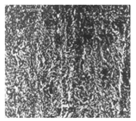 | 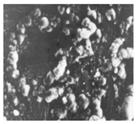 | [45] | |
| QMQTPH | 3.1 | 303.15 | MS (C 0.18 %, Mn 0.6%, S 0.05%, P 0.04%, Si 0.1%, Fe) | 0.5 | 5.0 × 10−10 | 3.5 × 10−11 | 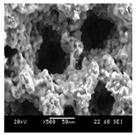 |  | [53] | |
| Henna extract | Natural extract | 3.1 | 298.15 | MS (C 0.179%, Si 0.165%, Mn 0.439%, Cu 0.203%, S 0.034%, Fe) | 1.2 | 1.9 × 10−9 | 1.4 × 10−10 |  |  | [67] |
| Aqueous garlic peel extract | 3.1 | 298.15 | C-steel (C 0.18%, P 0.04 %, S 0.05%, Mn 0.30%, trace Si, Fe) | 0.4 | 7.1 × 10−9 | 2.3 × 10−10 | 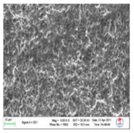 |  | [71] |
5. Conclusions
- -
- It has been observed that the use of HCl is not the best option in high-temperature environments since its high reaction rates with the rock in the formation require higher acid volumes to provide effective stimulation to the formation. Therefore, the use of retarded acid systems has been found successful in this area.
- -
- The use of nonionic surfactants (especially highly ethoxylated compounds) that provide effective reaction retardation because of their ability to viscosify the fluid is very beneficial. Their use has also resulted in the production of effective and dominant wormholes in core flood tests of recent experimental studies.
- -
- The study of nonylphenol as a nonionic surfactant in acid systems at high-temperature conditions would be an interesting and promising area of research that could most likely provide successful results in matrix acidizing treatments because of its positive results at 298.15 K in previous studies.
- -
- HCl by itself tends to flow through the most permeable zone of the formation when injected, leaving the low-permeability zones untreated. This is detrimental to the formations that have high heterogeneity. The use of diverters has been found very helpful in this aspect since their main purpose is to direct the acid to temporarily plug the high-permeability (thief) zones, thus making the acid flow through the less-permeable zones.
- -
- In this matter, the use of viscoelastic surfactants (VES) has been found outstanding in the diversion aspect, especially because they do not have any polymer content, and thus are less susceptible to causing damage after their use. In addition, the new foam-based VES system has promising results even at a permeability contrast of 15. However, the use of a polymer-assisted emulsified acid was found to be more successful than the latter at a permeability contrast of 19, which is a higher KR than the optimal one for foam-based VES systems.
- -
- The use of foam acid has been found to be helpful in diverting the acid to the low-permeability areas, but only at permeability contrasts lower than 7.8, which means that their use is very limited in heterogeneous formations.
- -
- Corrosion represents a large part of the total cost of acid treatments per year since HCl has been found to have a pitting tendency on steel (which is the main material used in acid treatments), which is worsened with an increase in temperature.
- -
- The use of inorganic corrosion inhibitors like arsenic and antimony has been limited due to their high toxicity, human health concerns, and environmental pollution. The use of organic compounds, especially the use of acetylenic compounds like propargyl alcohol and thiourea derivatives, which have high efficiency, has also been slowed down to their being non-biodegradable, which has worried several environmental organizations.
- -
- Greener corrosion inhibitors are necessary for acidizing treatments. The use of aqueous garlic peel extract was shown to have successful corrosion inhibition in acid treatments.
Author Contributions
Funding
Institutional Review Board Statement
Informed Consent Statement
Conflicts of Interest
References
- Rae, P.; Di Lullo, G. Matrix Acid Stimulation—A Review of the State-Of-The-Art. In Proceedings of the SPE European Formation Damage Conference, The Hague, The Netherlands, 13–14 May 2003. [Google Scholar] [CrossRef]
- Fredd, C.N.; Fogler, H.S. Alternative Stimulation Fluids and Their Impact on Carbonate Acidizing. In Proceedings of the SPE Formation Damage Control Symposium, Lafayette, LA, USA, 14–15 February 1996. [Google Scholar] [CrossRef]
- Garrouch, A.A.; Jennings, A.R., Jr. A contemporary approach to carbonate matrix acidizing. J. Pet. Sci. Eng. 2017, 158, 129–143. [Google Scholar] [CrossRef]
- Sokhanvarian, K.; Stanciu, C.; Fernandez, J.M.; Ibrahim, A.; Nasr-El-Din, H.A. Novel non-aromatic polymer-ionic surfactants to target deep carbonate stimulation. In Proceedings of the SPE International Conference on Oilfield Chemistry, Galveston, TX, USA, 8–9 April 2019. [Google Scholar] [CrossRef]
- Wang, Y.; Hill, A.D.; Schechter, R.S. The optimum injection rate for matrix acidizing of carbonate formations. In Proceedings of the SPE Annual Technical Conference and Exhibition, Houston, TX, USA, 3–6 October 1993. [Google Scholar]
- Fredd, C.N.; Fogler, H.S. Optimum conditions for wormhole formation in carbonate porous media: Influence of transport and reaction. Spe J. 1999, 4, 196–205. [Google Scholar] [CrossRef]
- Bazin, B.; Abdulahad, G. Experimental investigation of some properties of emulsified acid systems for stimulation of carbonate formations. In Proceedings of the Middle East Oil Show and Conference, Manama, Bahrain, 20–23 February 1999. [Google Scholar]
- Huang, T.; Ostensen, L.; Hill, A.D. Carbonate matrix acidizing with acetic acid. In Proceedings of the SPE International Symposium on Formation Damage Control, Lafayette, LA, USA, 23–24 February 2000. [Google Scholar]
- Perez, T.E. Corrosion in the oil and gas industry: An increasing challenge for materials. Jom 2013, 65, 1033–1042. [Google Scholar] [CrossRef] [Green Version]
- Quraishi, M.A.; Chauhan, D.S.; Ansari, F.A. Development of environmentally benign corrosion inhibitors for organic acid environments for oil-gas industry. J. Mol. Liq. 2021, 329, 115514. [Google Scholar] [CrossRef]
- Ashter, S.A. Thermoforming of Single and Multilayer Laminates: Plastic Films Technologies, Testing, and Applications; William Andrew: Norwich, NY, USA, 2013. [Google Scholar]
- Ortega, A. Acidizing High-Temperature Carbonate Formations Using Methanesulfonic Acid; Texas A&M University: College Station, TX, USA, 2015. [Google Scholar]
- Ibrahim, A.F.; Nasr-El-Din, H.; Jiang, L. HP/HT Matrix Acidizing Treatments of Carbonate Rocks Using A New Retarded HCl Acid System. In Proceedings of the International Petroleum Technology Conference, Dhahran, Saudi Arabia, 13–15 January 2020. [Google Scholar] [CrossRef]
- Noshi, C.I. A Novel In-Situ Generated Acid System on Carbonate Mineral Dissolution in Sandstone Reservoirs. Ph.D. Thesis, Texas A&M University, College Station, TX, USA, December 2005. [Google Scholar]
- Huang, T.; McElfresh, P.M.; Gabrysch, A.D. Carbonate matrix acidizing fluids at high temperatures: Acetic Acid, chelating agents or Long-Chained carboxylic acids? In Proceedings of the SPE European Formation Damage Conference, The Hague, The Netherlands, 13–14 May 2003. [Google Scholar] [CrossRef]
- Buijse, M.; de Boer, P.; Breukel, B.; Burgos, G. Organic acids in carbonate acidizing. SPE Prod. Facil. 2004, 19, 128–134. [Google Scholar] [CrossRef]
- Pandey, J.S.; Nazari, N.; Thomsen, K.; Barati, R. A novel Equipment-Friendly and Environment-friendly WELL Stimulation fluid for Carbonate Reservoirs: Better wormholes and Lower corrosion at Reservoir Conditions. In Proceedings of the SPE International Conference and Exhibition on Formation Damage Control, Lafayette, LA, USA, 7–9 February 2018. [Google Scholar] [CrossRef]
- Shank, R.A.; McCartney, T.R. Synergistic and Divergent Effects of Surfactants on the Kinetics of Acid Dissolution of Calcium Carbonate Scale. In Proceedings of the CORROSION 2013, Orlando, FL, USA, 17–21 March 2013. [Google Scholar]
- Zakaria, A.S.; Nasr-El-Din, H.A. A novel polymer-assisted emulsified-acid system improves the efficiency of carbonate matrix acidizing. SPE J. 2016, 21, 1061–1074. [Google Scholar] [CrossRef]
- Rodrigues, M.A.; Arruda, G.M.; Da Silva, D.C.; Da Costa, F.M.; De Brito, M.F.; Antonino, A.C.; Wanderley Neto, A.D. Application of nonionic surfactant nonylphenol to control acid stimulation in carbonate matrix. J. Pet. Sci. Eng. 2021, 203, 108654. [Google Scholar] [CrossRef]
- Gomaa, A.M.; Nasr-El-Din, H.A. Effect of elastic properties on the propagation of gelled and in-situ gelled acids in carbonate cores. J. Pet. Sci. Eng. 2015, 127, 101–108. [Google Scholar] [CrossRef]
- Correia, M.G.; Maschio, C.; Schiozer, D.J. Integration of multiscale carbonate reservoir heterogeneities in reservoir simulation. J. Pet. Sci. Eng. 2015, 131, 34–50. [Google Scholar] [CrossRef]
- Pal, S.; Mushtaq, M.; Banat, F.; Al Sumaiti, A.M. Review of surfactant-assisted chemical enhanced oil recovery for carbonate reservoirs: Challenges and future perspectives. Pet. Sci. 2018, 15, 77–102. [Google Scholar] [CrossRef] [Green Version]
- Li, Y.; Deng, Q.; Zhao, J.; Liao, Y.; Jiang, Y. Simulation and analysis of matrix stimulation by diverting acid system considering temperature field. J. Pet. Sci. Eng. 2018, 170, 932–944. [Google Scholar] [CrossRef]
- Gomaa, A.M.M. Acid Diversion in Carbonate Reservoirs Using Polymer-Based In-Situ Gelled Acids. Ph.D. Dissertation, Texas A&M University, College Station, TX, USA, May 2011. [Google Scholar]
- Wei, B. Evaluation of Preformed Particle Gel as a Diverting Agent for Acidizing; Missouri University of Science and Technology: Rolla, MO, USA, 2017. [Google Scholar]
- Cao, C.; Zhou, F.; Cheng, L.; Liu, S.; Lu, W.; Wang, Q. A comprehensive method for acid diversion performance evaluation in strongly Heterogeneous Carbonate reservoirs stimulation using CT. J. Pet. Sci. Eng. 2021, 203, 108614. [Google Scholar] [CrossRef]
- Al-Anazi, H.A.; Nasr-El-Din, H.A.; Mohamed, S.K. Stimulation of tight carbonate reservoirs using acid-in-diesel emulsions: Field application. In Proceedings of the SPE Formation Damage Control Conference, Lafayette, LA, USA, 18–19 February 1998. [Google Scholar]
- Nasr-El-Din, H.A.; Al-Anazi, H.A.; Mohamed, S.K. Stimulation of water-disposal wells using acid-in-diesel emulsions: Case histories. SPE Prod. Facil. 2000, 15, 176–182. [Google Scholar] [CrossRef]
- Madyanova, M.; Hezmela, R.; Artola, P.; Guimaraes, C.R.; Iriyanto, B. Effective matrix stimulation of high-temperature carbonate formations in south Sumatra through the combination of emulsified and viscoelastic self-diverting acids. In Proceedings of the SPE International Symposium and Exhibition on Formation Damage Control, Lafayette, LA, USA, 15–17 February 2012. [Google Scholar]
- Czupski, M.; Kasza, P.; Leśniak, Ł. Development of selective acidizing technology for an oil field in the Zechstein Main Dolomite. Energies 2020, 13, 5940. [Google Scholar] [CrossRef]
- Finšgar, M.; Jackson, J. Application of corrosion inhibitors for steels in acidic media for the oil and gas industry: A review. Corros. Sci. 2014, 86, 17–41. [Google Scholar] [CrossRef] [Green Version]
- Ali, S.; Reyes, J.S.; Samuel, M.M.; Auzerais, F.M. Self-Diverting Acid Treatment with Formic-Acid-Free Corrosion Inhibitor. U.S. Patent 7,902,124, 8 March 2011. [Google Scholar]
- de Queiroz Baddini, A.L.; Cardoso, S.P.; Hollauer, E.; Gomes, J.A.D.C.P. Statistical analysis of a corrosion inhibitor family on three steel surfaces (duplex, super-13 and carbon) in hydrochloric acid solutions. Electrochim. Acta 2007, 53, 434–446. [Google Scholar] [CrossRef]
- Hill, D.G.; Romijn, H. Reduction of risk to the marine environment from oilfield chemicals: Environmentally improved acid corrosion inhibition for well stimulation, Corrosion. In Proceedings of the CORROSION 2000, Orlando, FL, USA, 26–31 March 2000. [Google Scholar]
- Panossian, Z.; de Almeida, N.L.; de Sousa, R.M.F.; de Souza Pimenta, G.; Marques, L.B.S. Corrosion of carbon steel pipes and tanks by concentrated sulfuric acid: A review. Corros. Sci. 2012, 58, 1–11. [Google Scholar] [CrossRef]
- Durnie, W.; De Marco, R.; Jefferson, A.; Kinsella, B. Development of a Structure-Activity Relationship for Oil Field Corrosion Inhibitors. J. Electrochem. Soc. 1999, 146, 1751–1756. [Google Scholar] [CrossRef]
- Torres-Islas, A.; Serna, S.; Uruchurtu, J.; Campillo, B.; González-Rodríguez, J.G. Corrosion inhibition efficiency study in a microalloyed steel for sour service at 50 °C. J. Appl. Electrochem. 2010, 40, 1483–1491. [Google Scholar] [CrossRef]
- Brondel, D.; Edwards, R.; Hayman, A.; Hill, D.; Mehta, S.; Semerad, T. Corrosion in the oil industry. Oilfield Rev. 1994, 6, 4–18. [Google Scholar]
- Singh, A.; Quraishi, M.A. Acidizing corrosion inhibitors: A review. J. Mater. Environ. Sci. 2015, 6, 224–235. [Google Scholar]
- Annand, R.R.; Hurd, R.M.; Hackerman, N. Adsorption of monomeric and polymeric amino corrosion inhibitors on steel. J. Electrochem. Soc. 1965, 112, 138. [Google Scholar] [CrossRef]
- Cotton, J.B.; Scholes, I.R. Benzotriazole and related compounds as corrosion inhibitors for copper. Br. Corros. J. 1967, 2, 1–5. [Google Scholar] [CrossRef]
- Talati, J.D.; Gandhi, D.K. N-heterocyclic compounds as corrosion inhibitors for aluminium-copper alloy in hydrochloric acid. Corros. Sci. 1983, 23, 1315–1332. [Google Scholar] [CrossRef]
- Popova, A.; Christov, M. Evaluation of impedance measurements on mild steel corrosion in acid media in the presence of heterocyclic compounds. Corros. Sci. 2006, 48, 3208–3221. [Google Scholar] [CrossRef]
- Vishwanatham, S.; Haldar, N. Furfuryl alcohol as corrosion inhibitor for N80 steel in hydrochloric acid. Corros. Sci. 2008, 50, 2999–3004. [Google Scholar] [CrossRef]
- Popova, A.; Sokolova, E.; Raicheva, S.; Christov, M. AC and DC study of the temperature effect on mild steel corrosion in acid media in the presence of benzimidazole derivatives. Corros. Sci. 2003, 45, 33–58. [Google Scholar] [CrossRef]
- Ita, B.I.; Offiong, O.E. The inhibition of mild steel corrosion in hydrochloric acid by 2,2′-pyridil and a-pyridoin. Mater. Chem. Phys. 1997, 51, 203–210. [Google Scholar] [CrossRef]
- el Rehim, S.S.A.; Ibrahim, M.A.M.; Khalid, K.F. The inhibition of 4-(20-amino-50-methylphenylazo) antipyrine on corrosion of mild steel in HCl solution. Mater. Chem. Phys. 2001, 70, 268–273. [Google Scholar] [CrossRef]
- Quraishi, M.; Jamal, D. Fatty acid triazoles: Novel corrosion inhibitors for oil well steel (N-80) and mild steel. J. Am. Oil Chem. Soc. 2000, 77, 1107–1111. [Google Scholar] [CrossRef]
- Quraishi, M.A.; Jamal, D.; Singh, R.N. Inhibition of mild steel corrosion in the presence of fatty acid thiosemicarbazides. Corrosion 2000, 58, 201–207. [Google Scholar] [CrossRef]
- Aljourani, J.; Raeissi, K.; Golozar, M.A. Benzimidazole and its derivatives as corrosion inhibitors for mild steel in 1 M HCl solution. Corros. Sci. 2009, 51, 1836–1843. [Google Scholar] [CrossRef]
- Tang, L.; Li, X.; Li, L.; Qu, Q.; Mu, G.; Liu, G. The effect of 1-(2-pyridylazo)-2-naphthol on the corrosion of cold rolled steel in acid media: Part 1: Inhibitive action in 1.0 M hydrochloric acid. Mater. Chem. Phys. 2005, 94, 353–359. [Google Scholar] [CrossRef]
- Saliyan, V.R.; Adhikari, A.V. Quinolin-5-ylmethylene-3-{[8-(trifluoromethyl)quinolin-4-yl]thio}propanohydrazide as an effective inhibitor of mild steel corrosion in HCl solution. Corros. Sci. 2008, 50, 55–61. [Google Scholar] [CrossRef]
- Salarvand, Z.; Amirnasr, M.; Talebian, M.; Raeissi, K.; Meghdadi, S. Enhanced corrosion resistance of mild steel in 1 M HCl solution by trace amount of 2-phenyl-benzothiazole derivatives: Experimental, quantum chemical calculations and molecular dynamics (MD) simulation studies. Corros. Sci. 2017, 114, 133–145. [Google Scholar] [CrossRef]
- Barmatov, E.; Geddes, J.; Hughes, T.; Nagl, M. Research on corrosion inhibitors for acid stimulation. In Proceedings of the CORROSION 2012, Salt Lake City, UT, USA, 11–15 March 2012. [Google Scholar]
- Quraishi, M.A.; Ahmad, M.A.S.; Venkatachari, G. Synergistic effect of 2-amino-6-chloro-benzothiazole on inhibitive performance of propargyl alcohol during corrosion of mild steel in boiling hydrochloric acid solution. Bull. Electrochem. 1997, 13, 257–259. [Google Scholar]
- Bentiss, F.; Lebrini, M.; Lagrenee, M. Thermodynamic characterization of metal dissolution and inhibitor adsorption processes in mild steel/2, 5-bis (n-thienyl)-1, 3, 4-thiadiazoles/hydrochloric acid system. Corros. Sci. 2005, 47, 2915–2931. [Google Scholar] [CrossRef]
- Khaled, K.F.; Babić-Samardžija, K.; Hackerman, N. Theoretical study of the structural effects of polymethylene amines on corrosion inhibition of iron in acid solutions. Electrochim. Acta 2005, 50, 2515–2520. [Google Scholar] [CrossRef]
- Wang, H.L.; Liu, R.B.; Xin, J. Inhibiting effects of some mercapto-triazole derivatives on the corrosion of mild steel in 1.0 M HCl medium. Corros. Sci. 2004, 46, 2455–2466. [Google Scholar] [CrossRef]
- Abd El-Rehim, S.S.; Ibrahim, M.A.; Khaled, K.F. 4-Aminoantipyrine as an inhibitor of mild steel corrosion in HCl solution. J. Appl. Electrochem. 1999, 29, 593–599. [Google Scholar] [CrossRef]
- Sibel, Z.O.R.; Doğan, P. Inhibition of acidic corrosion of iron and aluminium by SDBS at different temperatures. Corros. Rev. 2005, 23, 217–232. [Google Scholar]
- Emregül, K.C.; Kurtaran, R.; Atakol, O. An investigation of chloride-substituted Schiff bases as corrosion inhibitors for steel. Corros. Sci. 2003, 45, 2803–2817. [Google Scholar] [CrossRef]
- Rengamani, S.; Muralidharan, S.; Kulandainathan, M.A.; Iyer, S.V. Inhibiting and accelerating effects of aminophenols on the corrosion and permeation of hydrogen through mild steel in acidic solutions. J. Appl. Electrochem. 1994, 24, 355–360. [Google Scholar] [CrossRef]
- Quraishi, M.A.; Jamal, D. Inhibition of mild steel corrosion in the presence of fatty acid triazoles. J. Appl. Electrochem. 2002, 32, 425–430. [Google Scholar] [CrossRef]
- Williams, D.A.; Holifield, P.K.; Looney, J.R.; McDougall, L.A. Corrosion Inhibitor and Method of Use. U.S. Patent 5,002,673, 26 March 1991. [Google Scholar]
- Fourth North Sea Ministerial Declaration. Fourth North Sea Ministerial Declaration|International Environmental Agreements (IEA) Database Project. Available online: https://iea.uoregon.edu/treaty-text/3926 (accessed on 15 December 2021).
- Ostovari, A.; Hoseinieh, S.M.; Peikari, M.; Shadizadeh, S.R.; Hashemi, S.J. Corrosion inhibition of mild steel in 1 M HCl solution by henna extract: A comparative study of the inhibition by henna and its constituents (Lawsone, Gallic acid, a-D-Glucose and Tannic acid). Corros. Sci. 2009, 51, 1935–1949. [Google Scholar] [CrossRef]
- Satapathy, A.K.; Gunasekaran, G.; Sahoo, S.C.; Amit, K.; Rodrigues, P.V. Corrosion inhibition by Justicia gendarussa plant extract in hydrochloric acid solution. Corros. Sci. 2009, 51, 2848–2856. [Google Scholar] [CrossRef]
- Ashassi-Sorkhabi, H.; Majidi, M.R.; Seyyedi, K. Investigation of inhibition effect of some amino acids against steel corrosion in HCl solution. Appl. Surf. Sci. 2004, 225, 176–185. [Google Scholar] [CrossRef]
- Parikh, K.S.; Joshi, K.J. Natural compounds onion, garlic and bitter gourd as corrosion inhibitors for mild steel in hydrochloric acid. Trans. SAEST 2004, 39, 29–35. [Google Scholar]
- Pereira, S.S.D.A.A.; Pegas, M.M.; Fernandez, T.L.; Magalhaes, M.; Schöntag, T.G.; Lago, D.C.; D’Elia, E. Inhibitory action of aqueous garlic peel extract on the corrosion of carbon steel in HCl solution. Corros. Sci. 2012, 65, 360–366. [Google Scholar] [CrossRef]
Publisher’s Note: MDPI stays neutral with regard to jurisdictional claims in published maps and institutional affiliations. |
© 2022 by the authors. Licensee MDPI, Basel, Switzerland. This article is an open access article distributed under the terms and conditions of the Creative Commons Attribution (CC BY) license (https://creativecommons.org/licenses/by/4.0/).
Share and Cite
Chacon, O.G.; Pournik, M. Matrix Acidizing in Carbonate Formations. Processes 2022, 10, 174. https://doi.org/10.3390/pr10010174
Chacon OG, Pournik M. Matrix Acidizing in Carbonate Formations. Processes. 2022; 10(1):174. https://doi.org/10.3390/pr10010174
Chicago/Turabian StyleChacon, Ofelia Gomez, and Maysam Pournik. 2022. "Matrix Acidizing in Carbonate Formations" Processes 10, no. 1: 174. https://doi.org/10.3390/pr10010174
APA StyleChacon, O. G., & Pournik, M. (2022). Matrix Acidizing in Carbonate Formations. Processes, 10(1), 174. https://doi.org/10.3390/pr10010174







